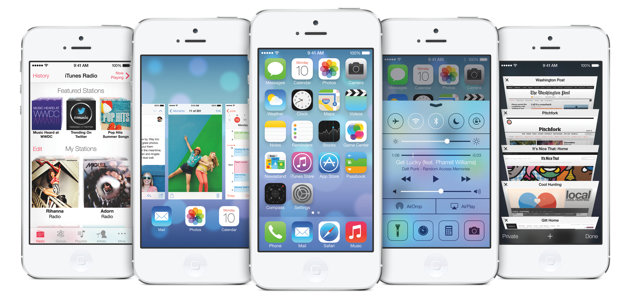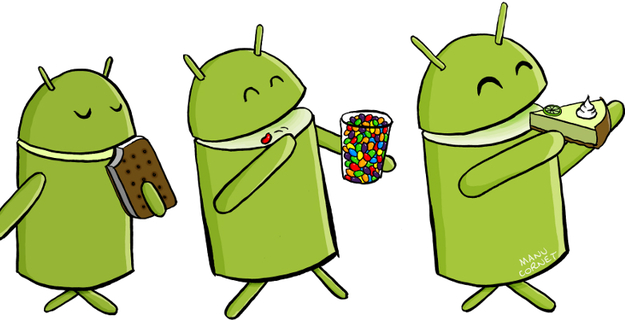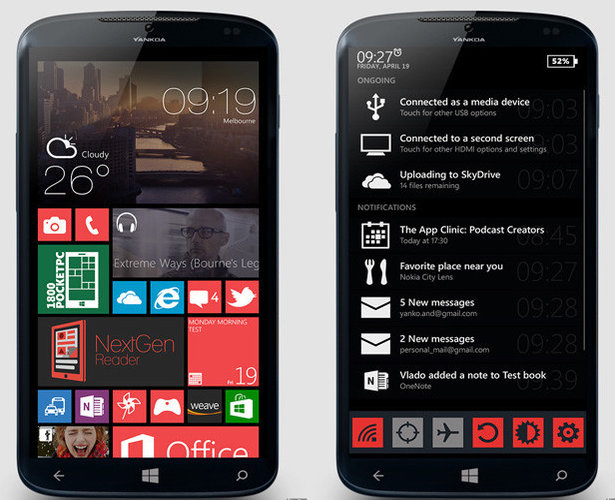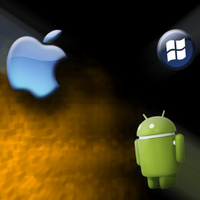Although new versions of the popular mobile operating systems means lots of reviews and in-depth analysis for consumers and gadget fans, their release is also important for mobile app developers.
Each new version of Android, iOS or Windows Phone can be seen from two sides. There is the user facing side including the user interface and access to the phone’s features. But there is also the other side, the programming interface – the API – which is available for developers.
As advancements in both hardware and services are made in the respective ecosystems then the system software needs to change so that developers have access to these new facilities. For example, in the past Near Field Communications (NFC) was added to Android and Windows Phone. This meant that NFC APIs were added for developers to use.
Apple is the only company that has currently released details of its next mobile OS version, namely iOS 7. It is likely to become available to consumers this fall. Google will also be releasing a new version of Android, it could be called Android 4.3 or it could be Android 5.0. There is yet no official word. Likewise Microsoft is working on Windows Phone 8.1 to be released a few months after Windows 8.1 for PCs and Windows 8.1 RT for tablets.
So what can developers expect?
Highlights of Contents
iOS 7
Since Scott Forstall left Apple and certain aspects of iOS 7’s design were taken over by Jonathan Ive (the man responsible for the colored iMacs), there has been a high expectation of some radical things coming in the next version of iOS. Those expectations were certainly met when Apple unveiled iOS earlier this year, with the biggest changes being in the UI.

For developers there is some work which needs to be done to ensure that apps fit comfortably in Apple’s new design structure. Along with the release of a beta version of iOS 7 for developers, Apple also release Xcode 5 which is set to become the minimum requirement for developers to build apps for iOS 7.
The biggest changes to iOS 7 are in the UI. There is a whole new design philosophy and a very different theme. The old wood and leather has been replaced by a flat but colorful design. Developers need to redesign app icons and note changes like the transparent status bar.
Along with the new look and feel, Apple has also introduced some new APIs. Specifically there is the new Sprite Kit framework that provides hardware-accelerated sprites for 2D and 2.5D games. Along with the sprite rendering and animation system there is also a physics engine, something developers could utilize in new games.
iOS 7 also introduces some new multitasking features and a new remote-notification background mode. These features add methods for apps to be woken up by the OS and give the apps a chance to perform background tasks.
Android 4.3 / Android 5.0
The official name of the next iteration of Android is yet unknown, but what is known is that it will support the next ‘API level.’ Google defines releases of Android not only by their consumer names (Android 4.2 Jelly Bean etc) but also by the developer API level. The current API level is 17 which was released in Android 4.2. API 17 added support for a variety of features including multiple users and lock screen widgets.
During Google’s 2013 developers conference various presentations mentioned new features that would be coming in API level 18, but without an official confirmation about the name or release date of the corresponding Android version.

What is known for sure is that API level 18 will support Bluetooth Smart (or Bluetooth Low Energy as it is sometimes known). This means that there will be a standard API for accessing the Bluetooth Smart features. Developers can start to create apps which interact with the increasingly popular low energy Bluetooth accessories including health and fitness related devices, proximity sensors, and new gadgets like smart-watches.
It was also possible to glean from the conference that the next version of Android will further optimize the Android graphics subsystem and improve the way the GPU is used by the OS. These changes should reduce the number of draw calls made to the GPU by half. There are also changes to the hardware accelerated 2D drawing subsystem which will now be multi-threaded and use multiple cores if present in the CPU.
The result of these changes is that the UI should be even more fluid and third-party apps will be able to display complex elements without a performance hit.
Windows Phone 8.1
Microsoft has been very quiet about what will be included in Windows Phone 8.1. However various leaks suggest that it will include a notification center- something found in Android and iOS but has been sorely missing in Windows Phone. There is also rumored to be a new design for the calendar, the ability to sort apps by how often they are used, and a way to close running apps through the multitasking view.

Since Windows Phone 8.1 won’t likely be released until 2014 all these features could change. However before Windows Phone 8.1 is released there will be another release of Windows Phone 8. There have been two public releases of Windows Phone 8, called GDR1 and GDR2. It is anticipated that Microsoft will release GDR3 in time for handset makers to prepare for the holiday season. The rumors are that GDR3 will support phones with HD displays, something Android has supported for a while but a feature missing in iOS.
Gary Sims is a mobile app developer, technical writer and author of Mobile Advertising Comparison.
